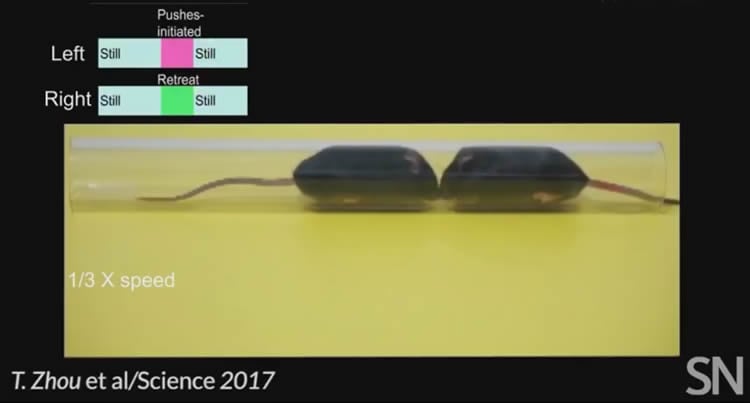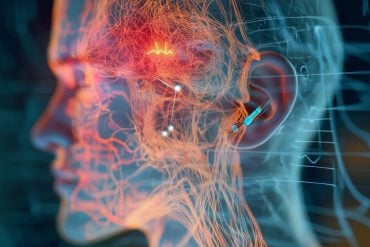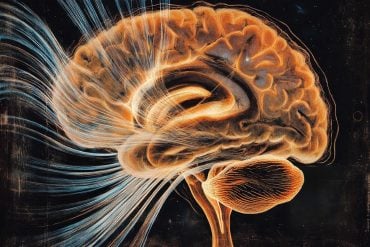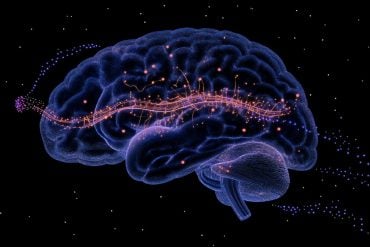Summary: A new report in Science identifies a neural circuit in the dorsomedial prefrontal cortex of mouse brains that may play a key role in social dominane. Using optogenetics, researchers were able to target neurons in the dmPFC to help boost a mouse’s chance of ‘winning’ in an aggressive encounter.
Source: AAAS.
Researchers have identified a neural circuit in the brains of mice that plays a role in social dominance.
Stimulating the neurons in this circuit significantly boosted a mouse’s chance of becoming the “winner” during aggressive encounters with other mice. Many species in the animal kingdom compete with each other to form a system of social hierarchy. From this hierarchy, a phenomenon called the “winner effect” has been observed, whereby each victory against a peer increases the victor’s probability of winning the next social dominance showdown.
The dorsomedial prefrontal cortex (dmPFC) has been implicated in the long-term regulation of social dominance, yet the exact mechanism behind the “winner effect” remains unknown. To gain more insights into the effect’s molecular underpinnings, Tingting Zhou and colleagues studied mice as they performed a standard social dominance test.
In this test, male mice in a tube face each other and researchers record how much each one engages in certain behaviors: push initiation, push-back, resistance, retreat, or stillness. Here, monitoring individual neurons in the dmPFC during such tests revealed that a particular subset became more active during both push and resistance (or dominance) behaviors.

In mice with an established social rank, the researchers inhibited this subset of dominance neurons using a drug; within hours, these mice engaged in significantly fewer and shorter pushes and push-backs, the authors say, and in more retreats.
Next the researchers used optogenetics to stimulate the dmPFC neurons continuously during a social dominance encounter. This instantaneously induced winning against previously dominant opponents with a 90% success rate, without affecting the motor performance or anxiety level.
Researchers put male mice head-to-head in a tube and observed their behavior to determine dominance. The bars along the top of the screen tracks each mouse’s behavior moment by moment — whether he’s pushing, resisting or retreating. Eventually, the dominant mouse pushes the subordinate one out of the tube.
Remarkably, stimulating these neurons during social dominance tests one day affected the mice’s performance – without any stimulation – the next day; mice receiving more than six photostimulated wins all maintained their new rank, whereas most mice receiving fewer than five photostimulated wins returned to their original rank, the authors report.
Source: AAAS
Image Source: NeuroscienceNews.com image is adapted from the Science News video.
Video Source: Video credited to Science News.
Original Research: Abstract for “History of winning remodels thalamo-PFC circuit to reinforce social dominance” by Tingting Zhou, Hong Zhu, Zhengxiao Fan, Fei Wang, Yang Chen, Hexing Liang, Zhongfei Yang, Lu Zhang, Longnian Lin, Yang Zhan, Zheng Wang, and Hailan Hu in Science. Published online July 13 2017 doi:10.1126/science.aak9726
[cbtabs][cbtab title=”MLA”]AAAS “A Neural Switch for Becoming Alpha Male.” NeuroscienceNews. NeuroscienceNews, 14 July 2017.
<https://neurosciencenews.com/alpha-male-7082/>.[/cbtab][cbtab title=”APA”]AAAS (2017, July 14). A Neural Switch for Becoming Alpha Male. NeuroscienceNew. Retrieved July 14, 2017 from https://neurosciencenews.com/alpha-male-7082/[/cbtab][cbtab title=”Chicago”]AAAS “A Neural Switch for Becoming Alpha Male.” https://neurosciencenews.com/alpha-male-7082/ (accessed July 14, 2017).[/cbtab][/cbtabs]
Abstract
History of winning remodels thalamo-PFC circuit to reinforce social dominance
Mental strength and history of winning play an important role in the determination of social dominance. However, the neural circuits mediating these intrinsic and extrinsic factors have remained unclear. Working in mice, we identified a dorsomedial prefrontal cortex (dmPFC) neural population showing “effort”-related firing during moment-to-moment competition in the dominance tube test. Activation or inhibition of the dmPFC induces instant winning or losing, respectively. In vivo optogenetic-based long-term potentiation and depression experiments establish that the mediodorsal thalamic input to the dmPFC mediates long-lasting changes in the social dominance status that are affected by history of winning. The same neural circuit also underlies transfer of dominance between different social contests. These results provide a framework for understanding the circuit basis of adaptive and pathological social behaviors.
“History of winning remodels thalamo-PFC circuit to reinforce social dominance” by Tingting Zhou, Hong Zhu, Zhengxiao Fan, Fei Wang, Yang Chen, Hexing Liang, Zhongfei Yang, Lu Zhang, Longnian Lin, Yang Zhan, Zheng Wang, and Hailan Hu in Science. Published online July 13 2017 doi:10.1126/science.aak9726






